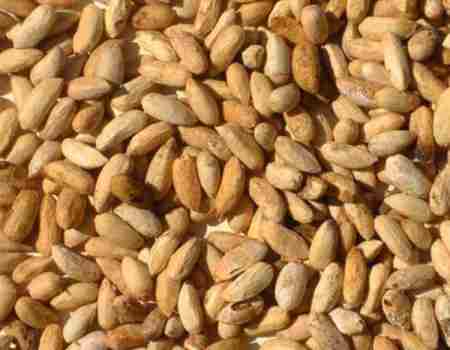Neem tree
The neem tree is a fast growing and evergreen tree
, is very drought resistant and has many uses.
The Neem tree grows in areas with arid conditions,
and low annual rainfall, like India or Mid-east.
This tree can become thrity meters high.
For its many ways of being useful the Neem tree
has many names, like "Sacred Tree",'reliever
of sickness' , 'village pharmacy' etc.
Neem tree as a street tree
There are more then 20 milion Neem trees to be found
in India. It is the most common street tree there.
Every village has a name Neem tree, mostly on the
village square. The most important reason is
that the Neem tree is evergreen, almost every
other tree drops its leaves in the dry season,
but the Neem tree always gives shadow.
The neem tree is noted for its drought resistance.
Another reason is that the Neem tree is very tolerant
against polluted or slightly salt groundwater.
Neem tree grows on every kind of soil, but
prefereable on sand, as its roots can reach
the ground water level easely. For this reason,
the neem tree plays an important role in
reforestation programs and replanting arid lands.

Dried Neem seeds.
Neem seed and Neem oil
The neem tree delivers 50 kilogram of seeds yearly.
It take a seedling 4 year to become a seed producing
tree reaching the maturity after 10 years.
The Neem seeds are pressed to obtain the bitter tasting
non-edible oil. That oil has many purposes.
The seeds cake from pressed seeds are used as fertilizer.
Neem seed cake ploughed into the soil and
protects plant roots from nematodes and white ants.
Neem seed processing
Directly after harvesting the seeds need to be
depulped and dried into the sun. It is important
to start this processes directly after harvesting.
toring Neem seeds needs to be in sacks that allow
good ventilating to prevent moulding.
Neem and nimbin
The oil cntain a bitter component called nimbin.
The nimbin has anti-inflammatory, antipyretic,
antifungal, antihistamine and antiseptic properties.
Its most important use in medicin: Nimbin is at
the base of many medications used in dermatolgy
and inflammatory diseases.
Neem seeds as a repellant
The crushed seeds are used as a repellent in India for
thousend years. Here is how it works;
The crushed seeds are dilted with water and sprayed
on to the crop in the fields: this is done weekly.
It prevents the crops from being eaten by insect.
It doesn't kill them, just keep them away. But it works
at a low cost, is effectiv and without the danger
of resistance against the reppelant.
Neem leaves
The tender shoots are eaten as a vegetable.
The same is true for the small white flowers:
they are eaten as a vegetable in India.
Dried neem leaves are slightly alkaline,
and are used as a fertilizer, correcting the
acidity of rice fields.
Neem wood
Neem wood is hard and heavy and durable:
the wood is termite resistant.
It has many uses but mostly the same as tropical
hardwood and used in housbuilding as timberwood.
Neem juice
Neem juice is associated with the hindu
festival of Gudhi padwa, the Hindu New Year.
Neem juice neutralise the summer heat.
Neem juice has a bitter taste.
Neem tree relatives
The Neem tree belongs to the mahogany family Meliaceae
|
|